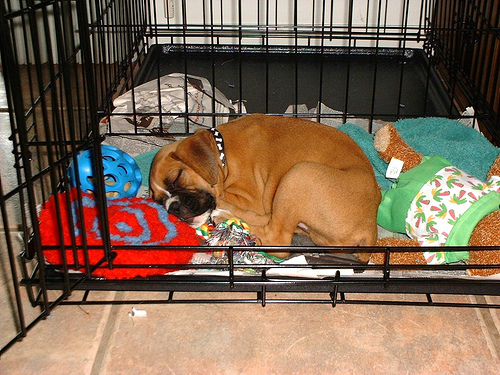We are going to talk about puppies and how to avoid some of the common problems many owners face if they raise their puppy incorrectly.

Which Puppy is Right for Me?
Puppies come from a whole range of sources such as recognized breeders, animal shelters and unplanned pregnancies. The thing to bear in mind is what puppy will suit your personality, life style, and your circumstances? Are you an active person who likes to run and be outdoors? Do you have a hectic lifestyle with a young family? Are you someone who likes nothing better than relaxing on the sofa and watching your favourite movie? Do you live in a spacious house with a garden, or a compact city pad? Whatever your lifestyle and circumstances, try to get a dog to match it. Examples of high energy dogs that would need lots of space and exercise are springer spaniels, beagles, Jack Russells, collies and Australian shepherds. Low energy dogs include French bull dogs, pugs, basset hounds and King Charles spaniels. These breeds would suit an apartment and wouldn’t require a great amount of exercise. But just because some breeds don’t need so much exercise, it doesn’t mean that they don’t need regular walks. Walks are so important for dogs to get exercise and mental stimulation.
You also want to consider factors such as whether you like to maintain a spotless home? If so, you probably don’t want to get a dog that sheds or a dog that drools a lot. If you live in a hot climate like me, breeds that are brachycephalic, (dogs with pushed in noses), like pugs, Pekingese and bulldogs, may suffer in the heat as they may find it harder to breathe. Similarly, it would be wise not to choose a breed with a thick heavy coat, such as a husky. If you have young children you will probably find large breeds more difficult, as they can easily knock a toddler over. So make sure you consider all factors before purchasing your puppy. Luckily, over many years of selective breeding you have a huge range of breeds to choose from.
Potty Training
This part of training your dog is normally very easy if done correctly. The most straight forward way is to crate train them. Put a crate (this is a large cage) in your home. Make it as nice as possible with a comfortable bed, toys, chews, water and food. The dog will come to love his little area and won’t want to poo or pee in it. At regular intervals, perhaps every hour, take the little guy out onto the desired toilet area such as the garden, balcony area or pee pad. When he does go in the desired area, give him a tasty treat and lots of praise. Play with him and let him get some exercise, and when he tires pop him back in his crate. By creating a small area and not letting him roam around the house you are setting him up for success, because now he can’t pee and poo all over the house. He has his safe little area to rest and sleep in, and he learns that he goes to the toilet in a certain place.

You can also use puppy pens with or instead of crates. I like to use puppy pens at the intermediate stage of potty training. When the pup gets bigger and wants a larger area to play in than the crate will allow, I will make up a large puppy pen. You must still take him to the desired toilet area at regular intervals during this stage of his potty training. He just gets more room to explore and play than the crate and it’s a great last step before allowing him to explore the whole house. It’s also a great place to put him when you need to go out briefly, so he can’t get up to much mischief.

After a few weeks of crate training, he will be so used to his toilet area that he will want to go to the designated area by himself. Of course there will be accidents, and if you see your dog go in the house just give a firm “NO!” and take him to his toilet area. Remember to continue to praise him when he goes where you want him to go. If he has a relapse you can do a day or two of crate training to remind him of where to go.
I know it might sound labour intensive, but there really are no short cuts. You may think that you don’t have time to do it, but the beauty of crate training is that you can leave the dog in the crate and return to the house at regular intervals to allow him to go to the toilet and play.
If you still don’t think you can afford the time, maybe you need to get a friend to help, or consider if you have time to take care of a dog properly. You could also take him to a training facility like mine, as potty training is a common problem we help with.
I like to put dogs of a similar size and temperament together so they can play safely and happily. This means they have company and are not so reliant on you. They get to play and so tire and sleep more, and they get some socialization with other dogs. Of course this is not always possible, but if you have friends or neighbours who have friendly dogs that enjoy play, why not introduce them to your new puppy for a few hours? Just make sure you check they have been fully vaccinated, have no skin problems and don’t have ticks or fleas.
